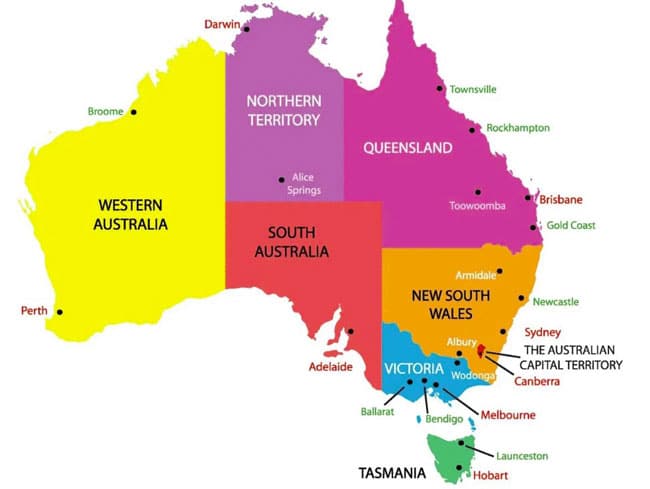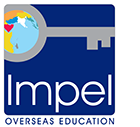Short on time? Here are the highlights:
- Most Australian states and territories have now announced student return pilots or broader plans to welcome back international students
- Quarantine and testing requirements vary from state to state, as does the expected timing and pace of student returns
There has been a flurry of announcements from Australian states and territories in recent weeks. New student return pilots have been approved, and we now see a variety of timelines and arrival protocols in place for incoming students in the coming months.
If, like us, you have struggled to keep on top of the latest developments, we hope the following summary will be helpful. This information is current as of our publication date on 17 November and we will update this post with any further significant developments going forward.
Before we begin, a few other important items for context.
First, the Australian academic year – for higher education institutions – is generally structured around two semesters, beginning in February or March (depending on institution) and July and August. The Australian K-12 system follows a schedule of four terms beginning in January, April, July, and October.
Second, the Australian government has expanded its list of approved COVID vaccines in recent months. As of 17 November, the vaccines approved by Australia’s Therapeutic Goods Administration (TGA) are:
- Comirnaty (Pfizer)
- Vaxzevria (AstraZeneca)
- Covishield (AstraZeneca)
- Spikevax (Moderna)
- Janssen-Cilag (Johnson & Johnson)
- Coronavac (Sinovac)
- BBIBP-CorV (Sinopharm) (for 18-60 years old)
- Covaxin (Bharat Biotech)
In order to be considered fully vaccinated, incoming travellers must have had two full doses at least 14 days apart (or one dose of the Janssen-Cilag/Johnson & Johnson vaccine), and must have completed their course of vaccination at least seven days before arriving in Australia.
Finally, vaccination rates within Australia, which had been lagging behind earlier this year, are beginning to increase more quickly. As of mid-November 2021, roughly 70% of eligible Australians are fully vaccinated against COVID-19.
With that foundation in place, here is a summary of the current student return plans for states and territories.

Australian Capital Territory
Capital city: Canberra
The Australian Capital Territory (ACT) announced on 22 October that it would welcome back fully vaccinated, international higher education students for the start of the 2022 academic year.
Returning students will need to follow all Australian government vaccination and testing requirements but will not be required to quarantine.
“It is great to have clarity about arrangements in the ACT and to know that as soon as the borders open our students can come straight home to campus,” said Brian Schmidt, vice-chancellor of The Australian National University (ANU). “We will continue to work with the Commonwealth on arrangements to open the borders to students as soon as Australia safely can.”
New South Wales
Capital city: Sydney
The New South Wales (NSW) government announced on 12 November that vaccinated students will be allowed to return to the state without quarantine.
The first chartered plane of returning students under the NSW International Student Arrivals Pilot Plan will touch down in Sydney on Monday, 6 December. That flight will carry about 250 students from over 15 countries, including Indonesia, Singapore, Vietnam, South Korea, China, and Canada.
“This is a significant milestone in our roadmap to recovery and I can’t wait to welcome back such an important part of our community,” said Premier Dominic Perrottet. “They don’t just make a significant contribution to our economy, but international students play a role in our culture and contribute to our community and lifestyle.”
Queensland
Capital city: Brisbane
On 26 October, Queensland’s Minister for Tourism, Innovation and Sport, Stirling Hinchliffe, announced the state will welcome back international students in early 2022. All incoming students will be required to complete a two-week quarantine at a designated facility.
The first phase of the Queensland Student Arrivals Plan will see continuing students from universities in the state return to complete their studies. The plan prioritises those studying medical, medical research, and allied health disciplines. The state anticipates a phased approach with eligibility criteria for education providers and students, and the number of places, expanding at each phase.
“While remote learning has made it possible for students to continue Queensland university studies from their home countries, we recognise it isn’t a sustainable, long-term substitute for to face-to-face tutorials and practical experience. We also know international students make an important contribution to the culture of Queensland cities and our regions.” said Minister Hinchliffe.
South Australia
Capital city: Adelaide
The South Australian government has announced that the state will welcome fully vaccinated domestic and international arrivals (including international students) with no quarantine period once 90% of South Australians (aged 12+) are fully vaccinated.
It is expected that the 90% target will be reached in late December 2021.
Study Adelaide is providing regular updates and additional background on its website.
Tasmania
Capital city: Hobart
Tasmania has also announced its roadmap to reopen, with all vaccinated international travellers able to enter without quarantining from 15 December. All arriving travellers must provide a negative COVID-19 test.
Victoria
Capital city: Melbourne
Victoria has also approved a safe student return pilot, for which students will be required to complete a 14-day quarantine. The first charter flights with returning students are expected in December 2021.
Western Australia
Capital city: Perth
The state government has announced that Western Australia (WA) will welcome back fully vaccinated international students in time for the start of the new academic year in February 2022.
The official reopening date will be set once Western Australia achieves an 80% double vaccination rate, which is expected to occur in December 2021.
In the meantime, Education Minister Sue Ellery has confirmed that the government anticipates a reopening date in late January or early February 2022, which would “allow eligible international students to arrive in time for Semester 1 2022 or to commence any required English language tuition or other preparatory courses before Semester 2.”
Northern Territory
Capital city: Darwin
International Education Minister Nicole Manison announced this month that the territory is preparing a plan for approval by the national government. If confirmed, the plan will see chartered flights landing returning students in the territory in January 2022.
“International students are a massive contributor to the territory economy, with each student contributing an average of AUS$40,693 each year,” the minister explained to ABC News. “By facilitating a pathway for international students to return to the territory and to Australia, we are helping to diversify the economy, grow our population, and support local jobs.”
Source: – https://monitor.icef.com/2021/11/australia-an-overview-of-international-student-return-plans/



